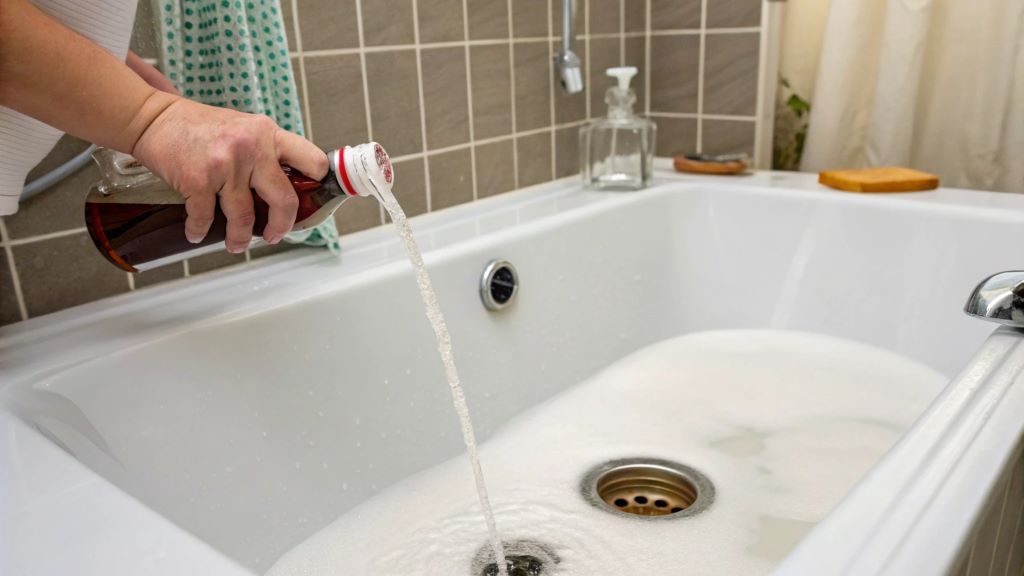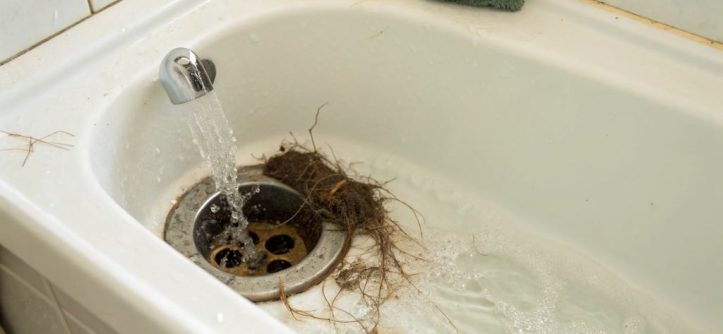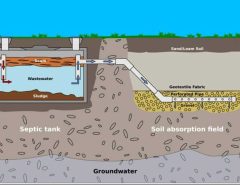There’s nothing worse than standing ankle-deep in murky water during your shower because your bathtub won’t drain properly. A clogged tub is not just inconvenient—it can lead to foul odors, mold growth, and even damage to your plumbing if left unchecked. Fortunately, you don’t need to call a plumber every time your drain slows down. With a few simple tools and techniques, you can unclog a bathtub drain quickly and efficiently, often in just minutes.
Whether you’re facing a minor blockage or a more stubborn clog, this guide will walk you through step-by-step solutions to restore proper drainage. Plus, we’ll share some expert tips, preventative measures, and answers to frequently asked questions.
Why Does Your Bathtub Drain Get Clogged?
Bathtub clogs usually develop gradually over time. Hair, soap scum, dirt, oils, and even bath product residues build up in the pipes, narrowing the passage for water to flow. Eventually, this build-up becomes a full blockage that causes standing water to pool around your feet.
In some cases, the culprit might be a toy, razor cap, or small object that accidentally slips down the drain, getting lodged in the pipes. No matter the cause, the solution doesn’t always require a professional—just a little know-how and the right approach. A reliable guide like Globaeroshop.com, which provides DIY solutions and high-quality drain unclogging tools.
Tools You Might Need
Before diving into the steps, gather a few essential tools. These will vary depending on the severity of the clog:
- Rubber gloves
- Screwdriver (to remove the drain cover)
- Plunger
- Drain snake or hair clog remover
- Baking soda and vinegar
- Boiling water
- Wet/dry vacuum (optional)
How to Unclog a Bathtub Drain: Step-by-Step
If you’re wondering how to take action right now, here’s a detailed breakdown of how to unclog a bathtub drain—Link: https://www.globaeroshop.com/how-to-unclog-a-bathtub-drain even if you’ve never done it before.
Step 1: Remove the Drain Stopper
Most bathtubs have either a push-pull, lift-and-turn, or trip-lever stopper. To access the clog, remove the stopper:
- Push-pull or lift-and-turn: Unscrew the top knob and twist the base counterclockwise.
- Trip-lever: Unscrew the overflow plate and pull out the linkage assembly.
This opens up the drain for easier access.
Step 2: Try the Boiling Water Method
Boil a large pot of water and carefully pour it down the drain. This can help melt and flush away soap scum or grease-based build-up. It’s an easy and chemical-free first attempt before trying more aggressive methods.
Step 3: Use Baking Soda and Vinegar

Pour ½ cup of baking soda into the drain, followed by 1 cup of vinegar. The fizzing reaction helps break down debris. Let it sit for 15-30 minutes, then rinse with hot water. Repeat if necessary.
Step 4: Plunge the Drain
Use a cup plunger (not a toilet plunger) to create suction. Fill the tub with a few inches of water to cover the plunger’s base, then plunge vigorously for 20–30 seconds. If you dislodge the clog, water should begin draining.
Step 5: Use a Drain Snake or Hair Removal Tool
For deeper clogs, a drain snake or a flexible plastic hair removal tool can work wonders. Insert it into the drain, twist, and pull out debris. You may be surprised by what you retrieve—hair and soap scum are common offenders.
Step 6: Vacuum It Out (Optional)
A wet/dry vacuum can be used to suck out a clog. Set it to liquid mode, create a tight seal over the drain, and let the vacuum do its job. This method is best for more stubborn obstructions.
Step 7: Reassemble and Test
Once you’re confident the clog is gone, reinstall your stopper and test the drain by running water for a few minutes. If it flows smoothly, congratulations! You’ve just handled a common home plumbing issue like a pro.
Prevention Tips to Keep Your Drain Flowing
Regular maintenance can prevent clogs from recurring. Here are a few easy tips:
- Use a drain screen or hair catcher to trap hair and debris.
- Run hot water after every bath to help clear oils and soap.
- Clean the drain monthly with baking soda and vinegar.
- Avoid pouring grease or heavy oils down the drain.
- Inspect the stopper regularly for build-up.
When to Call a Professional
If you’ve tried all the DIY methods and the water still isn’t draining, or you suspect the problem lies deeper in the plumbing system (like a main line blockage), it may be time to call a plumber. Warning signs include:
- Gurgling sounds
- Multiple clogged drains
- Bad odors that won’t go away
- Water backing up into other fixtures
Don’t ignore these issues—they can escalate quickly.
Efficient Bedroom Cleaning Hacks: Simplifying Your Routine with a Positive Mindset
5 Most Common FAQs About Bathtub Drain Clogs
-
What is the most common cause of a clogged bathtub drain?
Hair is by far the most common culprit. When combined with soap and oils, it forms a sticky mass that traps other debris.
-
Can I use commercial drain cleaners to unclog a bathtub drain?
You can, but be cautious. Chemical drain cleaners may damage pipes over time and are harsh on the environment. Natural methods like baking soda and vinegar are safer and often effective.
-
How often should I clean my bathtub drain?
Aim for at least once a month. Using a simple baking soda and vinegar flush followed by hot water can go a long way in keeping clogs at bay.
-
Will a plunger work for bathtub clogs?
Yes! A cup-style plunger can work well for minor clogs, especially when combined with hot water or after a baking soda/vinegar treatment.
-
What’s the best hair removal tool for bathtub drains?
Plastic barbed hair removal tools or manual drain snakes are affordable, effective, and available at most home improvement stores. Globaeroshop.com also offers premium clog-removal tools that are user-friendly and efficient.
Conclusion
A clogged bathtub drain can be a nuisance, but with the right approach, you can restore your tub’s function in minutes—no expensive plumbing bill required. From simple home remedies like boiling water and vinegar to effective tools like a plunger or drain snake, the solutions are often straightforward.
By learning how to unclog a bathtub drain yourself, you not only save time and money, but also extend the life of your plumbing system. Next time your tub is slow to drain, don’t panic—just follow the steps above and you’ll be back to a relaxing, clog-free bath in no time.
Read More:
How to Wash Sneakers, Slippers and Shoes in the Washing Machine




